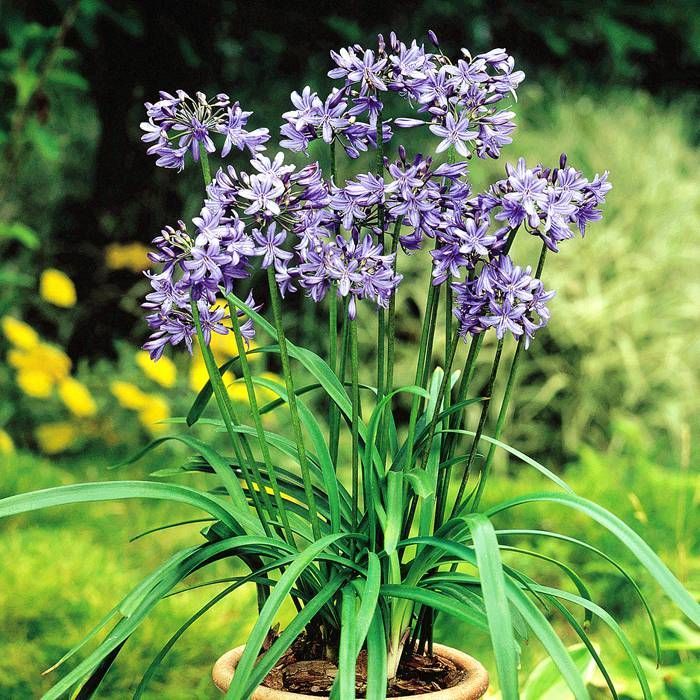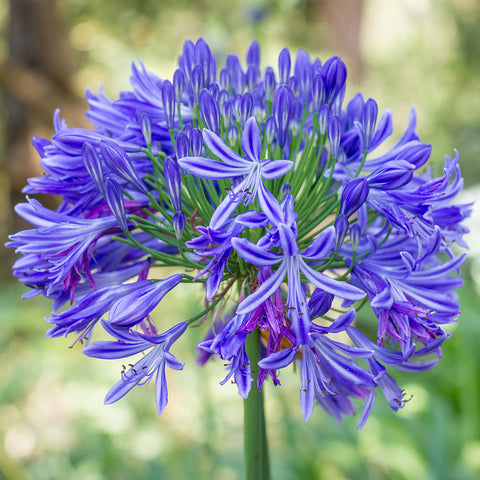Unleashing the Secret to Successful Agapanthus Growing: Tips and Tricks for a Flourishing Yard
In the world of horticulture, growing agapanthus successfully needs a tactical method that incorporates different elements of plant care. With careful focus to information, one can open the tricks to supporting these spectacular blossoms, leading to a yard that thrives with charm and vibrancy. By understanding the nuances of agapanthus cultivation, one can create an environment where these plants prosper and grow perfectly. In the complying with discussion, we will explore important tips and techniques that will certainly guide you in the direction of a growing agapanthus garden, providing insights into ideal methods, soil problems, watering techniques, and more.
Growing Agapanthus: Finest Practices
When growing Agapanthus, correct soil preparation is necessary for guaranteeing effective development and growth of these attractive blossoms. Agapanthus, commonly called Lily of the Nile or African lily, grows in well-draining dirt with a somewhat acidic to neutral pH level - Agapanthus. Before growing, it is crucial to change hefty clay dirts with organic issue such as garden compost or peat moss to improve drainage and provide crucial nutrients for the plants
To plant Agapanthus, choose a place that gets complete sunshine to partial color, as this will promote healthy development and bountiful flowering. Dig a hole twice the size of the plant's root round and position the Agapanthus at the very same depth it was formerly expanding. Delicately backfill the hole with soil, pushing down firmly to remove any type of air pockets around the roots.
Water the freshly planted Agapanthus thoroughly and remain to maintain the soil equally moist, especially during the plant's energetic expanding season. Agapanthus. Using a balanced plant food once a month can better sustain the plant's growth and blooming. By adhering to these ideal methods for planting Agapanthus, you can produce a spectacular screen of these exciting blossoms in your yard
Suitable Dirt Issues for Agapanthus
For optimum growth and growing success of Agapanthus plants, ensuring the dirt conditions are ideal is important. Agapanthus favors soil that is abundant in nutrients, so incorporating a well balanced plant food during the expanding period can promote healthy and balanced development and dynamic flowers.

Watering and Feeding Tips
To guarantee healthy and balanced growth and lively flowers, appropriate watering and feeding strategies are crucial for effective Agapanthus farming. Agapanthus plants take advantage of regular watering, particularly throughout the growing period. It is advised to water deeply as soon as a week, making certain the dirt is damp but not saturated. Throughout heat or in pots, more regular watering might be needed to stop the dirt from drying totally.
When it concerns fertilizing Agapanthus, a balanced fertilizer with equivalent components nitrogen, phosphorus, and potassium can be applied in the spring to promote healthy growth and flowering. Slow-release fertilizers are excellent for giving nutrients progressively over a prolonged duration. Avoid over-fertilizing, as this can cause extreme foliage development at the expense of blossoms.
In addition, integrating raw material like garden compost into the soil can boost nutrient degrees and improve dirt structure, assisting in the find more info general wellness of the Agapanthus plants. By following these watering and feeding ideas, gardeners can ensure their Agapanthus plants flourish and create magnificent screens of flowers.
Pruning and Deadheading Methods
Proper pruning and deadheading strategies play a crucial role in keeping the health and appearances of Agapanthus plants, enhancing the vital techniques of watering and fertilizing for successful farming. Pruning Agapanthus entails getting rid of spent flower heads, yellowing or dead fallen leaves, and general shaping of the plant to promote much better development. Deadheading, the process of eliminating faded flowers, not just improves the plant's look however additionally urges further flowering.
When deadheading Agapanthus, it is recommended to snip off the blossom stem at the base utilizing sharp, tidy shears. This procedure redirects the plant's energy from seed production back into root and vegetation growth, advertising a much healthier and a lot more durable plant. Normal deadheading can extend the blooming period of Agapanthus and avoid self-seeding, which can result in overcrowding.
In terms of trimming, Agapanthus generally take advantage of a light trim after blooming to clean the plant and encourage fresh development. Cutting down the invested flower stems and removing any type of broken or dead vegetation helps keep the plant's vigor and total appearance. Nevertheless, Check Out Your URL it is important to prevent cutting right into the crown of the plant, as this can compromise its wellness.

Protecting Agapanthus From Vermins and Diseases
Implementing efficient bug and disease administration methods is crucial to guarding the wellness and vitality of Agapanthus plants in farming. One typical parasite that impacts Agapanthus is the Agapanthus borer, a caterpillar that tunnels right into the plant, causing check these guys out damages to the fallen leaves and blossoms.
In enhancement to bugs, Agapanthus are prone to illness such as origin rot and fungal fallen leave areas. These concerns can usually be avoided by making sure appropriate water drainage and avoiding overwatering. If signs of disease appear, influenced parts of the plant must be promptly removed to prevent additional spread. Fungicides may likewise be made use of as a therapy measure, following the supplier's instructions thoroughly. By remaining watchful and dealing with pest and disease issues quickly, gardeners can assist their Agapanthus thrive and thrive.

Final Thought
To conclude, effective growing of agapanthus requires correct growing strategies, excellent soil conditions, adequate watering and feeding, normal pruning and deadheading, and security from conditions and bugs. By adhering to these techniques and tips, garden enthusiasts can make sure a growing yard loaded with beautiful agapanthus flowers. Agapanthus. Remember to maintain constant treatment and attention to detail to advertise the health and wellness and long life of these spectacular plants
When growing Agapanthus, correct dirt preparation is vital for guaranteeing successful development and growth of these attractive flowers.Water the freshly grown Agapanthus completely and continue to keep the soil uniformly wet, especially during the plant's active expanding period.For optimal development and blooming success of Agapanthus plants, ensuring the dirt conditions are perfect is essential. When growing or hair transplanting Agapanthus, ensure the soil is well-prepared to supply the required structure for the plants to develop themselves successfully. One usual bug that affects Agapanthus is the Agapanthus borer, a caterpillar that tunnels into the plant, causing damage to the fallen leaves and flowers.